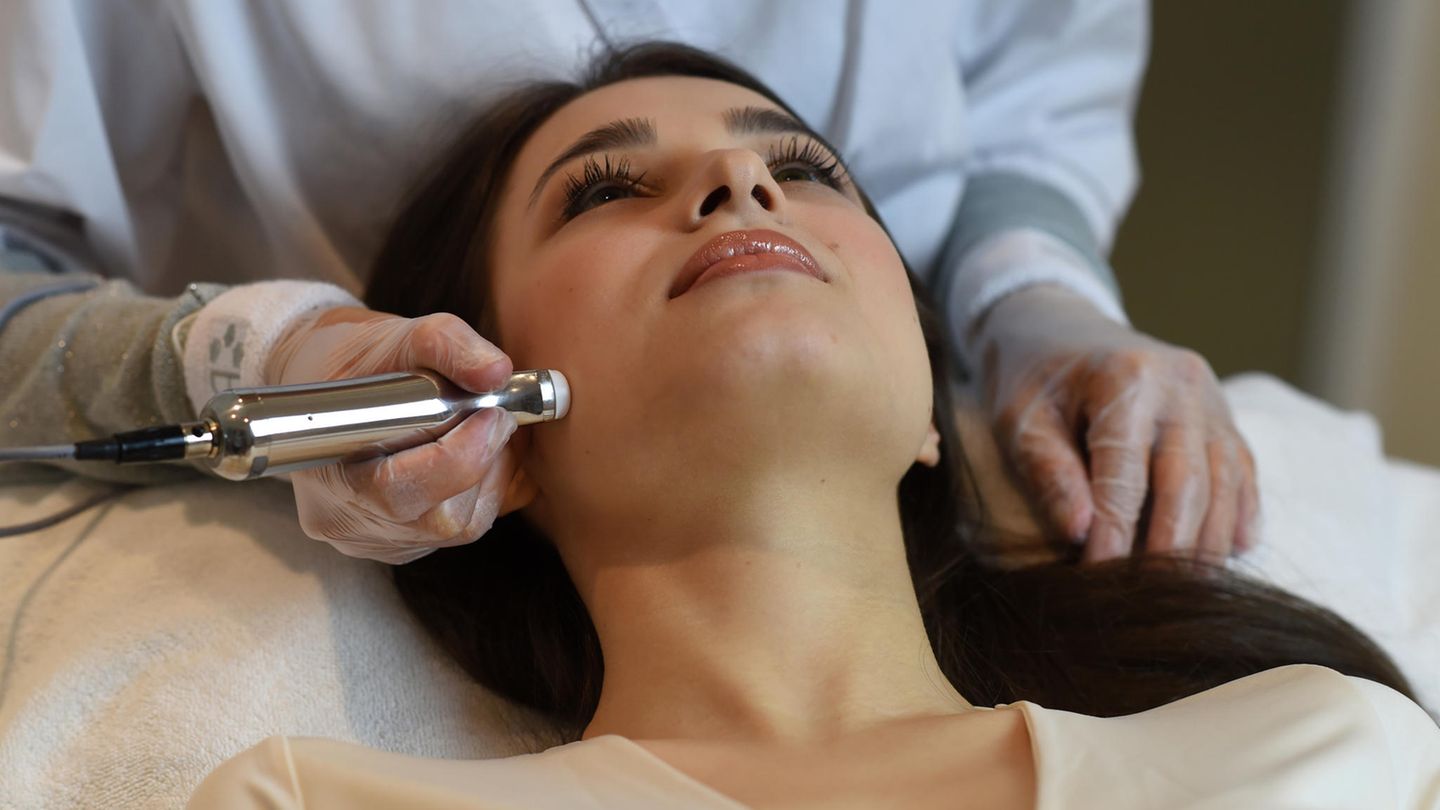Microneedling
How the Dermapen is supposed to ensure better skin – for acne scars and wrinkles
Copy the current link
The Dermapen is an aid that is used in microneedling to refine the skin’s appearance and tighten the skin. And you can now do that at home too.
Creams from the drugstore are usually not enough to reduce wrinkles, scars or pigment spots on the skin. But is there a way to get rid of them without treatment at the beauty salon or doctor? In fact, the microneedling method promises to address skin problems. With a Dermapen or a Dermaroller, even at home. But how does it work exactly? And what should you pay attention to? The star spoke to an expert about it.
What is microneedling?
First of all, it should be clarified what microneedling actually is. Beauty expert Dr. Sina Djalaei dem star: “Microneedling is a cosmetic treatment method in which tiny fine needles penetrate the top layer of skin, causing micro-injuries that stimulate the body’s natural healing process. This activates the skin’s own collagen, elastin and hyaluronic acid production, which are responsible for the firmness, The structure and elasticity of the skin is responsible for the increased production, the skin structure improves, wrinkles are smoothed, scars can be reduced and the skin appears firmer and more youthful overall.
Microneedling is a non-surgical procedure that is one of the minimally invasive procedures in aesthetic dermatology and cosmetics. Microdermabrasion is also one of these procedures.
How does microneedling work exactly?
The needles used in microneedling with the help of a dermapen or dermaroller usually reach a depth of around 0.1 to two millimeters into the skin. By moving in different directions – either on the face or on the body – they irritate the top layer of skin, the epidermis. The resulting fine wounds ensure that various messenger substances and growth factors are released into the skin. These stimulate wound healing. And have the effect of firmer and refined skin with increased hyaluronic acid, elastin and collagen production.
While the microneedling procedure was previously only offered in specialist practices, the treatment is now also available in many cosmetic studios – and can even be done at home. Of course, this saves money and you are flexible in use. But first you should know what you want to get:
- : It is used for larger areas such as stretch marks or scars, usually on the legs or stomach. Some sets also have smaller rollers for the face.
- Dermapen: It is used for smaller areas on the face such as wrinkles, pigment spots and acne scars.
What dangers are there?
But the expert also knows what dangers there can be: “Microneedling naturally causes many small injuries in the skin and can cause damage if used incorrectly. Scars occur when wounds or eczema become inflamed as a result of the treatment. Also an allergic reaction “For these reasons, Dermapens are riskier for use at home than for treatment in a professional environment,” he points out.
The Dermapen can do that
The is also known as a microneedling pen and is a vibrating pen from whose tip the needles come out. Most home models allow you to adjust the needle depth as desired. However, it is recommended that you use a maximum depth of 1.5 millimeters when using microneedling yourself. Although deeper settings can be more effective, they are better carried out by an expert, as they can of course also be more dangerous and can lead to injuries if used incorrectly.
The microneedling treatment with Dermapen should be carried out three to four times a week. After three to six months of regular use, the first results should usually become visible: reduced wrinkles, visibly fewer pigment spots or reduced impurities.
Tips for microneedling with Dermapen
The best way to proceed if you want to improve your skin with Dermapen is as follows:
- Clean the skin carefully before use.
- Clean or disinfect the dermapen well.
- Insert the needles straight into the skin and pass the pen at least ten times vertically, ten times horizontally and ten times diagonally over the relevant area.
- After use, a soothing main care product or a rich (cloth) use, and additional care if necessary.
- Clean the dermapen well and change the needle.
More tips
Djalaei adds: “For use at home, it is necessary to clean the face thoroughly before treatment and sterilize the dermapen to avoid infections. It is also based on the individual sensitivity of the skin and the desired end results It is important to choose the right needle length. The motto here is gentle application without too much pressure. You should definitely pay attention to the right aftercare with moisturizing products that soothe the skin – this is a must until the next application Then give yourself some rest.”
Before you try microneedling with Dermapen yourself, you should check whether your own skin is even suitable for such a method. A skin analysis and consultation with a dermatologist in advance can definitely make sense if you are unsure. The following also applies: Anyone who suffers from wounds, eczema, cold sores, psoriasis or active acne must avoid microneedling. If you also have very dry or sensitive skin, you should use a not so deep setting and first check an area of skin to see whether the skin can tolerate the application. If in doubt, always speak to your doctor or dermatologist in advance. If you are very sensitive to pain, you can take one before the treatment fall back.
Source: “”
*This article contains so-called affiliate links to products in online shops. If a user clicks on it and buys something, the publisher receives a commission from the retailer, not the manufacturer. There is more information about this .
maf
Source: Stern
I’m Caroline, a journalist and author for 24 Hours Worlds. I specialize in health-related news and stories, bringing real-world impact to readers across the globe. With my experience in journalism and writing in both print and online formats, I strive to provide reliable information that resonates with audiences from all walks of life.




